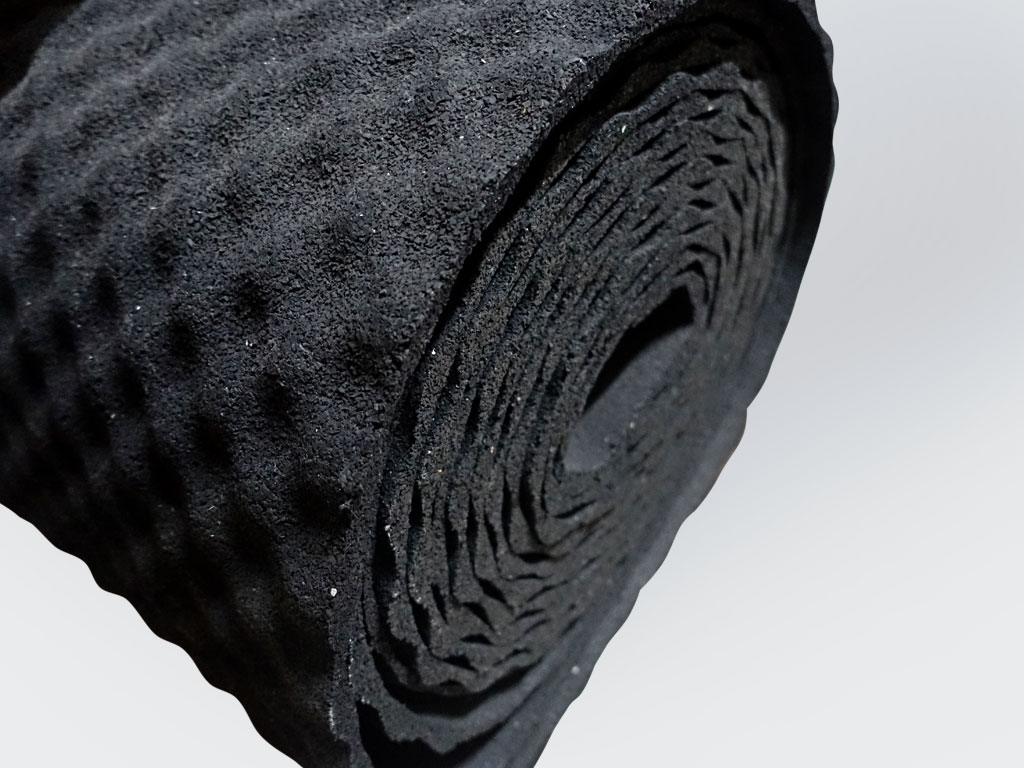Whirlpool storage
Whirlpool mounting for the purpose of decoupling structure-borne noise.
Online consulting!
When a whirlpool is used or filtered, noise emissions are generated which are perceived as disturbing.
If the whirlpool is placed on a terrace or balcony, it is important to ensure that any vibrations from the pumps are not transmitted to the balcony or house.
An insulation panel of Vibrasyl with a thickness of 12.5 or 25mm under the pool will absorb these vibrations.
Depending on the substructure of the whirlpool, full-surface bearing or strip bearing is used.
With the maximum load and the bearing surface we can determine the right type of Vibrasyl for you.
Another solution to eliminate annoying whirlpool noise is the Vibra 3D rubber granulate mat. The surface should be evenly prepared on the whole surface of the pool. The water must be able to run off if the whirlpool is partially or completely sunk into the floor, it must not have any contact with the walls, otherwise the sound will be transmitted again.
Frequently asked questions (FAQ)
Generally speaking, structure-borne sound is sound that propagates in solid bodies such as steel, concrete, etc. through vibration.
Structure-borne sound is sound that propagates in a solid body. When sound is transmitted to a solid body, the latter is set into vibration by the sound transmission. Thereby the sound propagates e.g. over thin-walled metal sheets or over the masonry.
The well-known effects of structure-borne noise result in the unavoidable need to create effective vibration insulation. A technologically relatively simple type of structure-borne sound insulation is achieved by installing an intermediate layer as close as possible to the source of interference, which interrupts the path of the sound vibrations. Motors, for example, are placed on specially designed vibration insulation bodies, thereby making them a vibration system that is almost independent of the environment or support. The same applies to building floors which are periodically subjected to powerful horizontal and vertical impulses at the same time, which are then freed from vibrations both horizontally and vertically by insulation.
Structure-borne sound insulation, also called vibration insulation, is a vibration insulation for frequencies above 40-50 Hz. It reduces the transmission of structure-borne sound which is emitted by machines or equipment and spreads in solid bodies (steel girders, concrete floors etc.) and is disturbingly radiated as airborne sound.
Vibra?syl insulation mats are made of open-pored foam and absorb liquids.?
Due to the favourable material properties, Vibra?syl is suitable for almost every application for vibration insulation and for the decoupling of structure-borne noise.
Vibra?syl insulating mats are used as flat sheet material or in the form of finished damping elements for damping under pressure and shear loads - for example in the storage of buildings, machines or industrial components up to stage technology.
The use of Vibra?syl in buildings offers Safe vibration protection of the building or part of a building against external sources of disturbance and their vibrations (also impact sound insulation), increase in the market value of the building, improved quality of life and work and a sustainable solution for the expected increasing comfort requirements.

